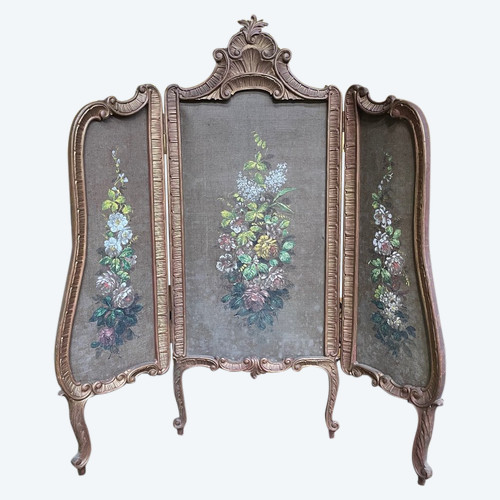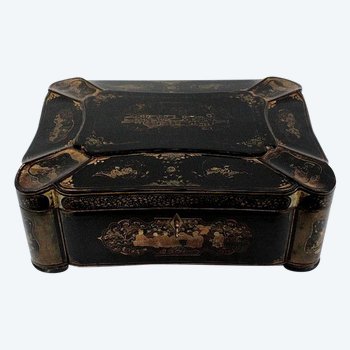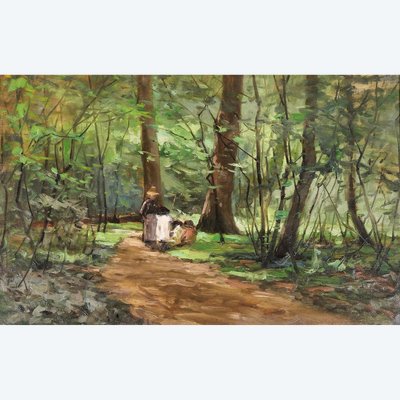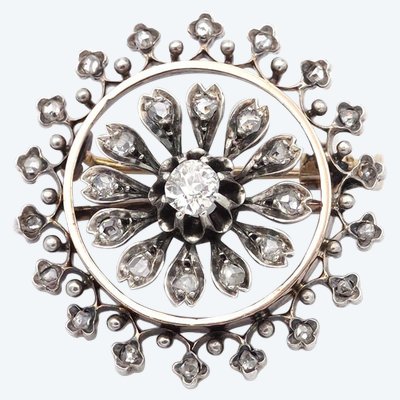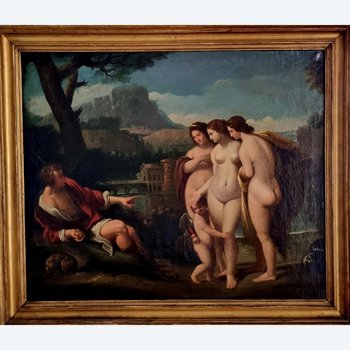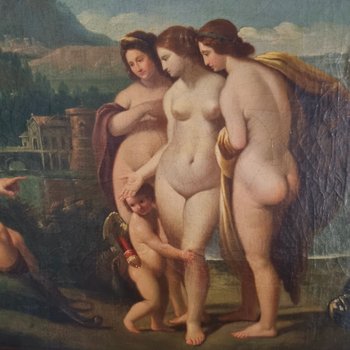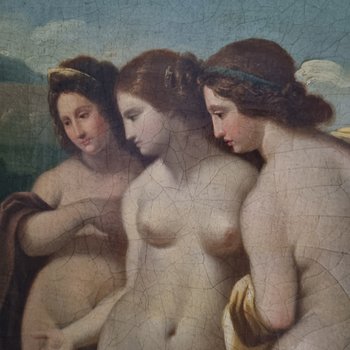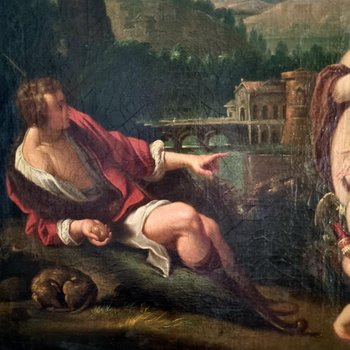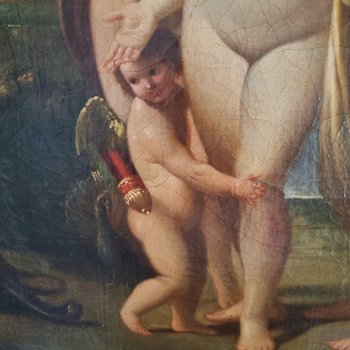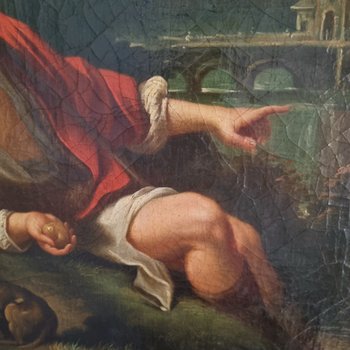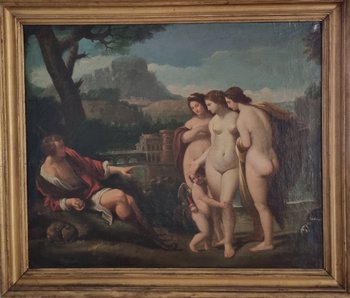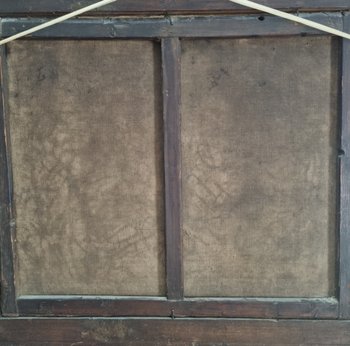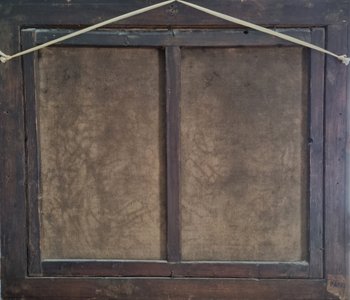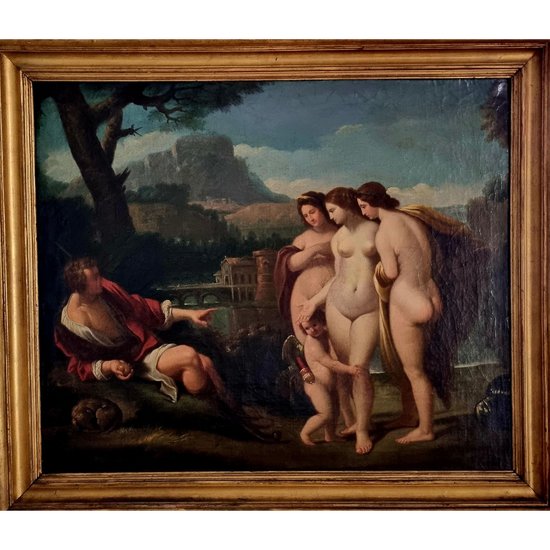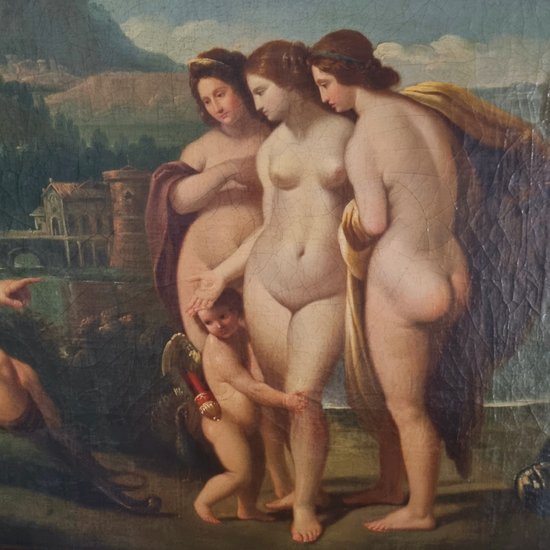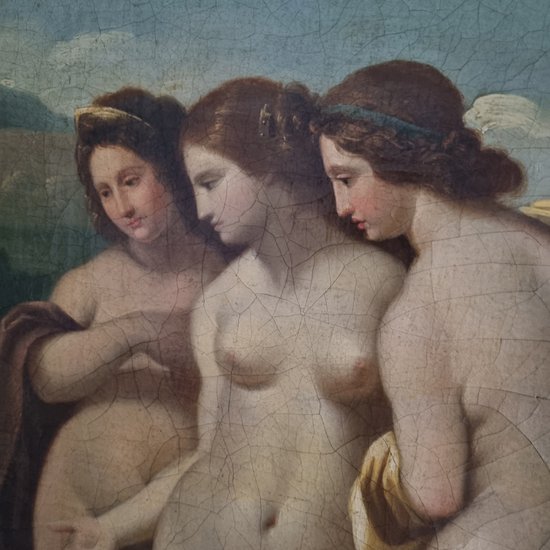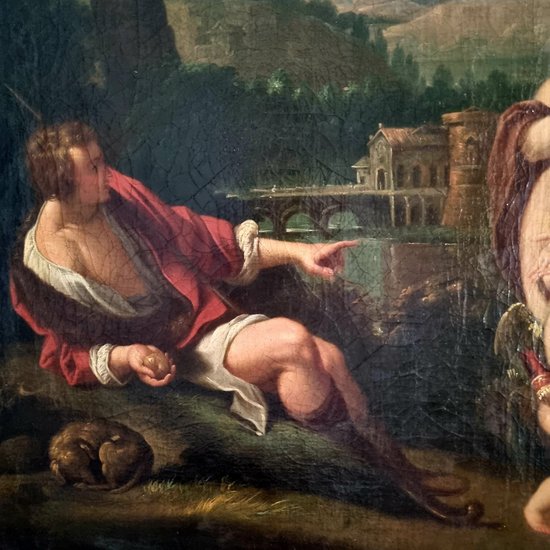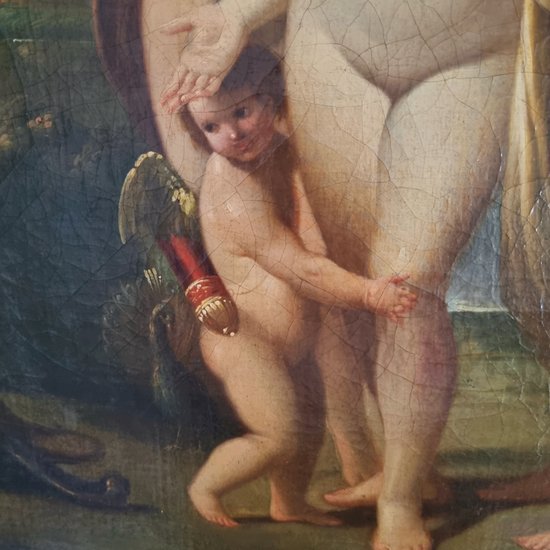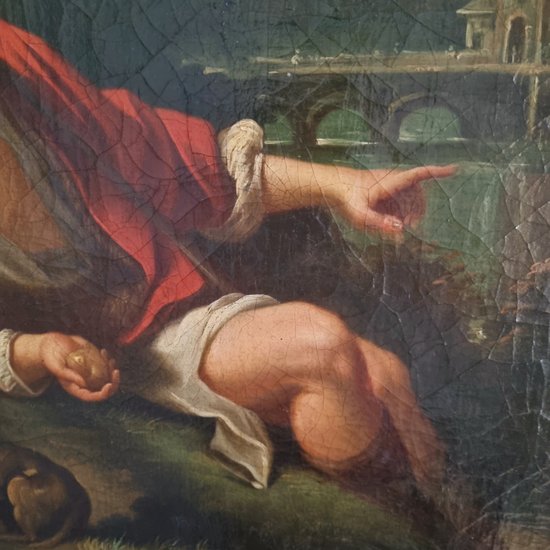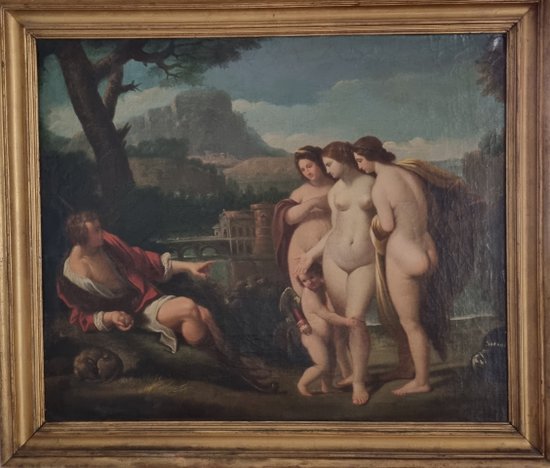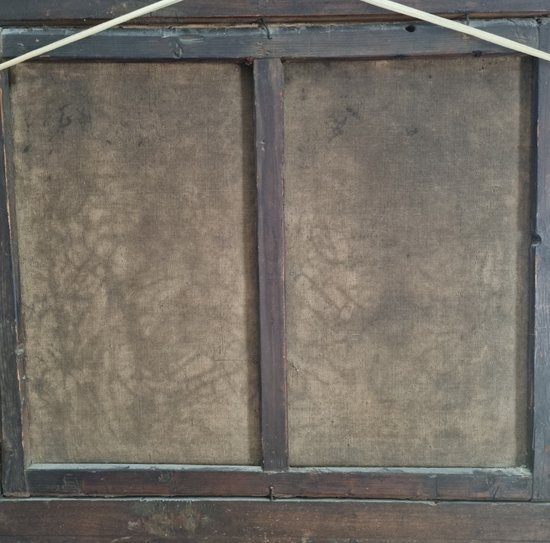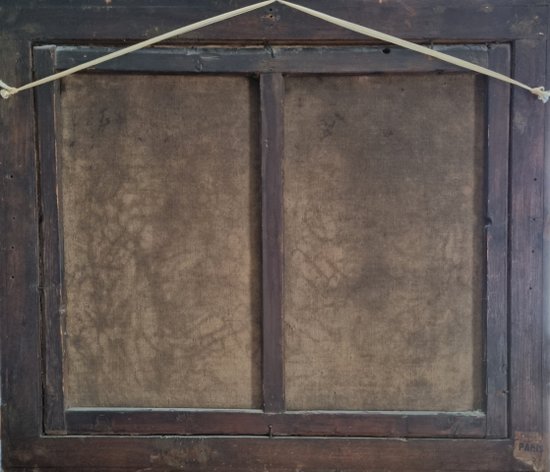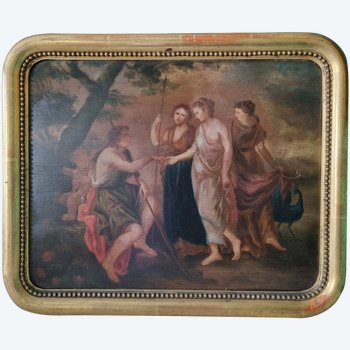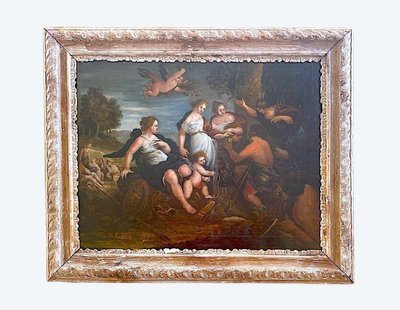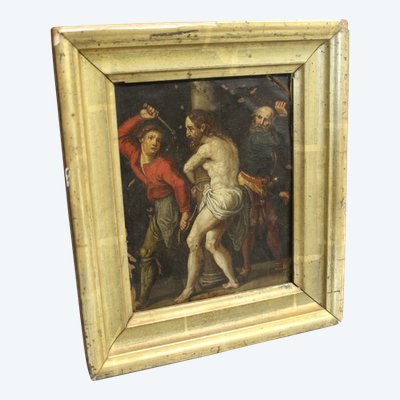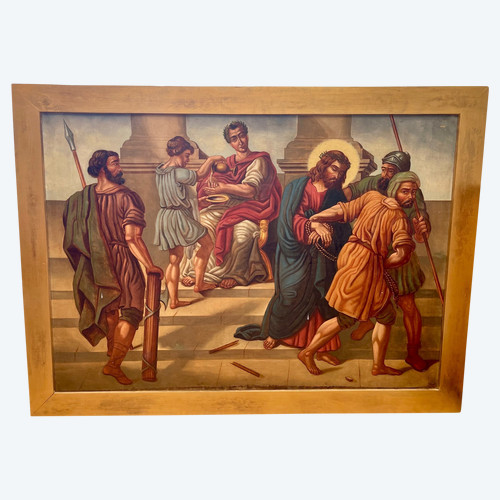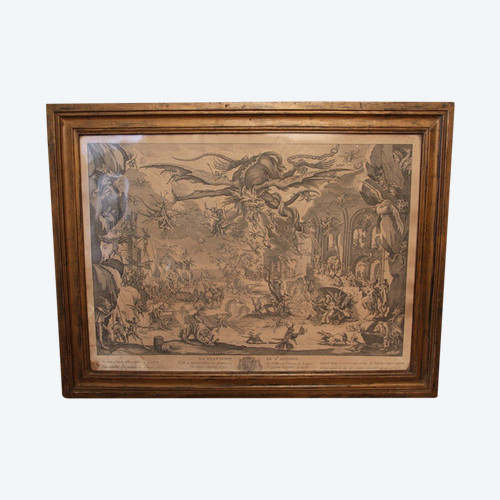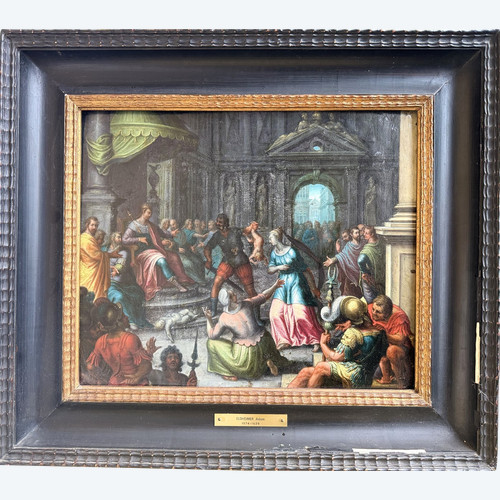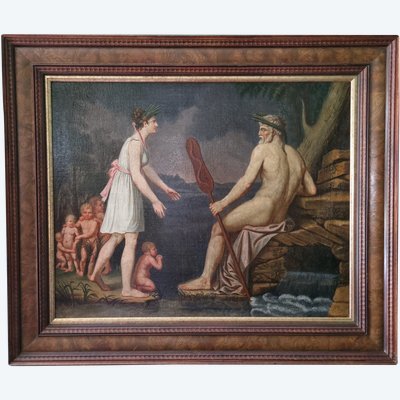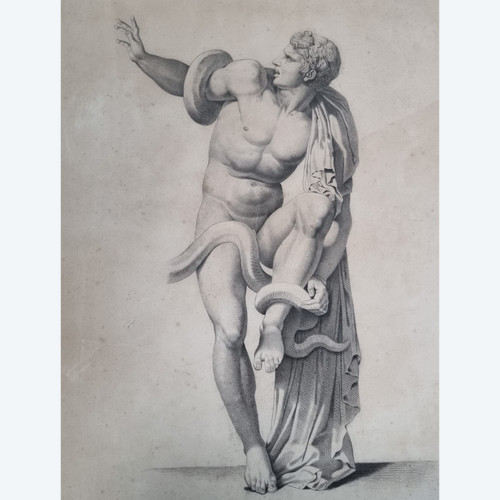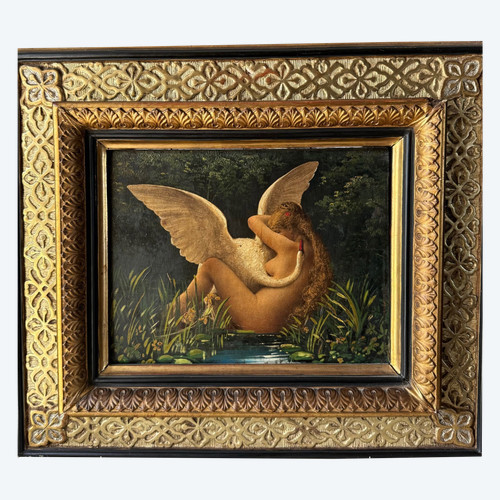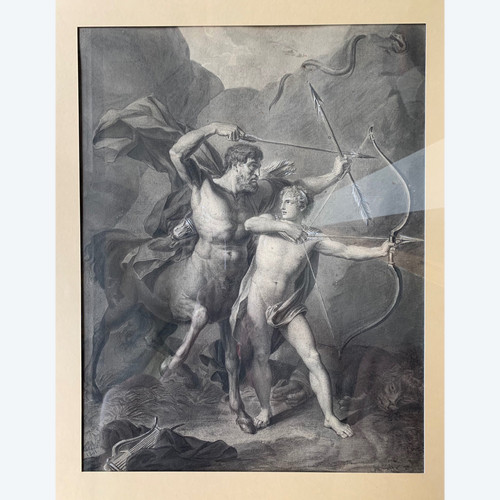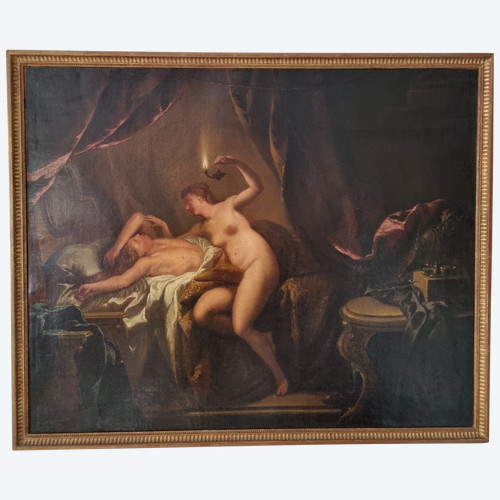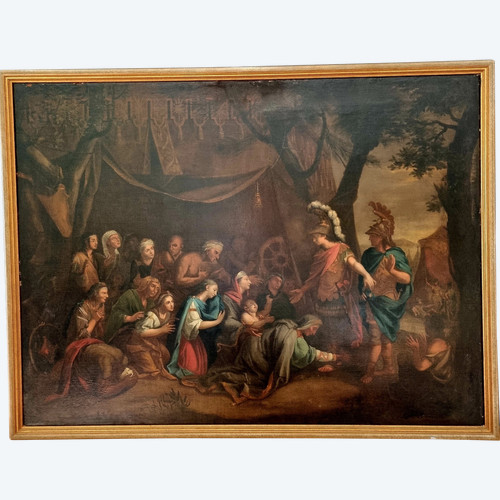This description has been translated and may not be completely accurate. Click here to see the original
Jacques-Antoine Vallin, The Judgment of Paris, Oil on canvas, late 18th century.
Magnificent oil on canvas depicting one of the most prized mythological scenes of the 18th century and the Imperial period: The Judgment of Paris.
The Master, with his characteristic style, introduces us to Paris, Eros, Venus, Juno and Minerva (Aphrodite, Hera and Athena).
To better understand this scene, it is essential to refer to the previous one: "The Apple of Discord."
I take this opportunity to tell it to you briefly and simply, like a story read to children:
Eris, goddess of discord, was very upset not to have been invited to the wedding of Pelée and Thétis, the parents of Achilles.
You've all had that famous moment when an unwanted "friend" came to your party uninvited. Well Eris is the patron saint of these people!
True to herself and her status, she brought as a gift a magnificent golden apple from the garden of the Hesperides on which was engraved:
"To the Most Beautiful"
A bit like the only Christmas present under the tree that does not bear the first name of its recipient, creating an infantile war to grant it.
Here the quarrelsome children are the three most beautiful goddesses of the assembly: Juno, Aphrodite and Minerva.
What followed was a divine bun crepage which had the effect of annoying the Boss, Zeus.
As he could not decide between his wife and his daughters (if you are a man in a women's home, you will easily understand), decreed that the decision would be made by a mortal.
And it is there that we find, in this magnificent oil on canvas by Vallin, our little Paris.
Lying lazily under a tree, the famous golden apple in his hand, looking almost superior to the goddesses standing before him, as if he already knew that the future of history belonged to him.
In order to influence the "shepherd-prince", each of the goddesses promised him in return an enticing present:
-Juno (Hera), a crown and a gigantic kingdom.
- Minerva (Athena), warrior glory.
-Aphrodite (Venus), the unconditional love of the most beautiful woman in the world.
Paris, having neither the soul of an Agamemnon and even less that of an Achilles, favored love...and therefore Aphrodite.
A choice which, as you know, will lead to the fall of Troy, as Cassander had predicted to Priam at the birth of Paris.
Exceptional work from the Directoire-Consulate period by Jacques-Antoine Vallin, in a very good state of preservation, on its original canvas.
Very beautiful gilt wood frame from the same period.
Certificate of expertise and authenticity from Mr. René Millet, reference in the expertise of paintings from the 18th and 19th centuries.
Dimensions
76 cm / 62 cm for the canvas.
90cm / 77cm with frame
Jacques-Antoine Vallin (1760-1835):
Considered, like Jacques-Louis David, as one of the greatest painters of the Napoleonic era, the biography of Jacques-Antoine Vallin still has certain gaps.
It is likely that the future artist received initial training from his father, a sculptor and engraver in Paris.
Then Vallin entered the school of the Royal Academy in 1775 under the protection of Dean.
A pupil of Drevet in 1779 then of Callet in 1786, he returned to Drevet's studio three years later.
He participated for the first time in the Salon in 1791 where he exhibited regularly until 1827.
Vallin treated the most varied themes, landscapes, Shipwreck scene, 1795 (Vizille, Museum of the French Revolution), portraits, Portrait of Doctor Forlenze, 1807 (London, National Gallery) but also genre scenes.
But what made the great success of the artist were his representations of mythological scenes in harmonious landscapes bathed in a soft golden light.
His work, marked by the neoclassical current, was clearly influenced by David Mallet and that of his master Prud'hon, Diane the huntress (Caen, Musée des Beaux-Arts).
Several paintings by Jacques Antoine Vallin are displayed in French museums including the Louvre:
• Diana and her bathing nymphs surprised by Actaeon. Sunset Effect, 1810: Louvre Museum
• The Temptation of Saint Anthony, Salon of 1827: Louvre Museum
• Shipwreck scene, 1795: Vizille French Revolution Museum
• Bacchantes in a landscape, 1796: Quimper Fine Arts Museum
• Young Cellist, 1810: Marmottan Museum
• Diana the Huntress, 1826: Thomas Henry Museum in Cherbourg
• Fighting cupids: Magnin Museum in Dijon
• Bacchante: Magnin Museum of Dijon
• Bacchante asleep in the undergrowth: Tours Museum of Fine Arts
• Bacchae and Love: Municipal Museum of Soissons
• The Tivoli waterfall: Romain Rolland Museum of Art and History in Clamecy
• Disenchantment: Magnin Museum in Dijon
• Diana the Huntress: Museum of Fine Arts of Caen
• Hylas and the Nymphs: Baron Martin de Gray Museum
• Reclining Nymph: Museum of Fine Arts and D
Ref: TPMYM4QO32
 Louis XV Style Firewall Or Screen
900 € EUR
Louis XV Style Firewall Or Screen
900 € EUR

